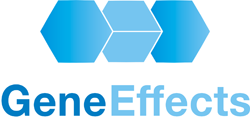I recently returned, albeit part-time, to work in academia and I was offered the chance to teach. Many academics in scientific research never teach, other than perhaps one-to-one “teaching” of a new doctoral student. In the past, I have presented my work to other scientists and also given a few guest lectures to undergraduates; but [...]
Author Archives: 保罗·丹尼
Applications & Bottlenecks In Next Generation Sequencing, Day 2
This word cloud shows the words that people used in the ice-breaking session, that I mentioned in my last post, to describe what they hoped to gain from the conference. On Day 2, our Keynote speaker was: Dr Anneke Seller, Oxford Genetics: Clinical utility; actionable #NGS diagnosis for patients & families http://t.co/0mmrSx1Dd5 #ngsmanchester — 保罗 [...]
Applications & Bottlenecks In Next Generation Sequencing
After months of preparation and the occasional sleepless night, November 5th arrived. It wasn’t only Bonfire Night, but also the beginning of a two-day conference, focusing on NGS in clinical genetics laboratories. Organised by my colleagues and friends from biotexcel and myself, it was held in the Manchester Conference Centre, in, naturally enough, Manchester, 联合王国. In order to break [...]
So, What Do Your Genes DO?
Genes are not passive. They are the target of molecular “dimmer switches”; typically (but not always) specific proteins, which dial up or turn down their activity. Most genes are translated into proteins, but discovering the true role of those proteins, in the life of a cell or a whole organism, is still one of the great challenges [...]
Some of our genes are missing…but which ones?
One can think of genes in a number of ways: At the level of the DNA – simply as a linear sequence of nucleotides, in ONE fixed order, in the “normal” state, or Again as a DNA molecule, but remember that genes in organisms, rather than in pieces of DNA in a test-tube, are subject [...]
遗传学会春季会议: 基因组学的健康和社会
The aim of of the meeting was to begin to answer the question: “What will be the impact of large-scale sequencing of human populations in the 21st Century?” Held at The Royal Society in London on 19th April 2013, the meeting brought together some distinguished figures from clinical genetics, population genomics, DNA fingerprinting and the [...]
基因 & 细胞治疗的人
The Annual meeting of the British Society for Gene and Cell Therapy, 以及针对在专家, 包括一天的演讲旨在为学生和公众. 主要针对GCSE和A级的学生, 但向所有人开放, this one day interactive event provided an opportunity to discuss and debate gene and [...]
新一代测序移动到诊所, 部分 2
first attempt at live tweets from #ngs2013 http://t.co/SbWrGx8weI — 保罗·丹尼 (@ Pauldennyuk) 三月 12, 2013 In my last post, I summarised the first four talks from this symposium: 1st Oxford Workshop and Symposium, 4th Techgene Knowledge Network Meeting, “NGS2013 Next generation Sequencing: Bioinformatics and Data Analysis” You could also read the Tweets from the meeting [...]
新一代测序移动到诊所
在一个光荣的日子 (但与北极风!) 本周早些时候,, 我参加了一个研讨会上利用NGS的诊断遗传学门诊: 关, # Ngs2013 today at Wolfson College Oxford http://t.co/SbWrGx8weI #NGS #Clinical #Dx #diagnostic #personalisedmed Should be good — 保罗·丹尼 (@ Pauldennyuk) 三月 12, 2013 发言者临床, bioinformaticians and biomedical [...]
什么教导我们人类先天性畸形的小老鼠?
Mice are born with their eyes tightly shut, opening them for the first time only a few days later. So when a mouse was noticed that was smaller than normal and had been born with it’s eyes open, it drew attention. Abnormalities like this arise spontaneously in all animal facilities, but sometimes they are not [...]
